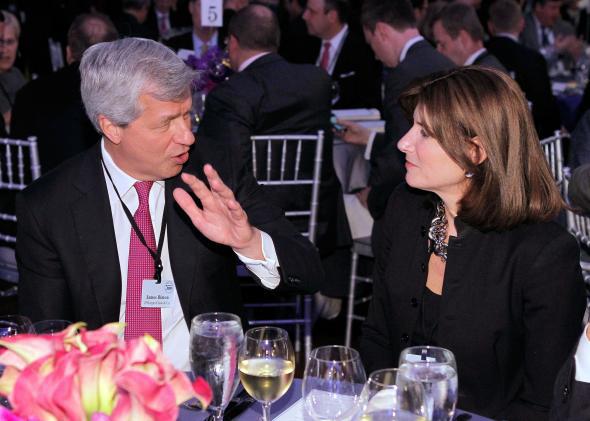The final $13 billion tally that JPMorgan will pay out in various ways to settle litigation launched by the federal government and various state attorneys general is eye-popping. But there’s a little bit less here than meets the eye at first glance, and a good deal less than the lead prosecutors are making there out to be in their triumphant press releases.
For starters, the money. Getting to $13 billion involves adding $9 billion in new payments to a $4 billion settlement JPMorgan already reached with the Federal Housing Finance Agency. Of the remaining $9 billion, just $2 billion takes the form of an actual fine. The $7 billion in other compensatory payments Morgan will have to make is tax-deductible, which assuming the company has smart accountants and lawyers working for it, will reduce the real pain by somewhere in the $2 billion–$3 billion range. And then backing this back out, JPMorgan can count writedowns of loans that are owned by third-party investors as constituting $2 billion worth of consumer relief even though no consumers would be relieved, and though theese writedowns are genuinely painful, they’d likely happen anyway.
The most interesting part of the affair is that the government said it was going to hold out for an admission of wrongdoing. That would set an important precedent and leave JPMorgan exposed to other kinds of litigation. But instead, Morgan seems to have managed to settle private litigation first, then get the government to agree to a “statement of facts” that doesn’t involve wrongdoing per se. Jonathan Weil summarizes: “There is nothing in JPMorgan’s admissions that would be damaging to the company.”
All in all, it looks like a case of a medium-sized settlement being puffed up to appear as massive as possible. But relative to the scale of the litigation, this is a win for the bank.
